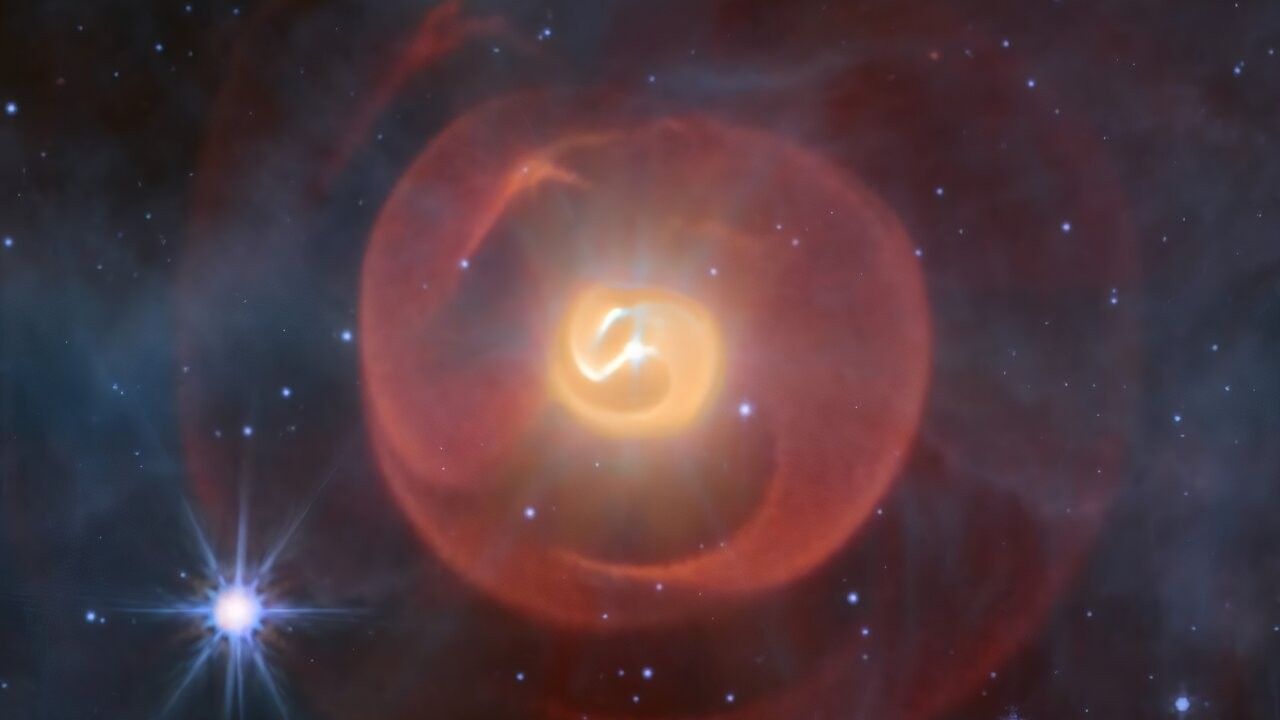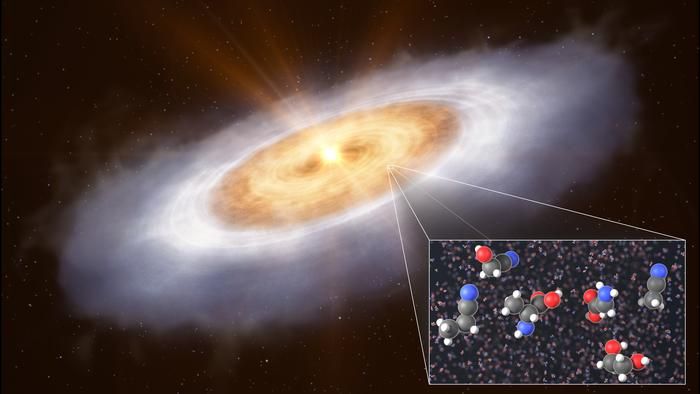Now Reading: James Webb Telescope Captures Fiery Clash Between Two Stars in ‘Serpent God of Destruction’ System
-
01
James Webb Telescope Captures Fiery Clash Between Two Stars in ‘Serpent God of Destruction’ System
James Webb Telescope Captures Fiery Clash Between Two Stars in ‘Serpent God of Destruction’ System

Fast Summary
- The James Webb Space telescope (JWST) captured a detailed image of the Apep nebula, a rare star system located 8,000 light-years away in the Milky Way galaxy.
- Apep was discovered in 2018 and named after the Egyptian serpent god of chaos due to its writhing dust pattern resembling a snake eating its tail.
- The system features two dying Wolf-Rayet stars expelling massive amounts of hot dust, along wiht a stable giant star influencing their surrounding surroundings.
- Wolf-Rayet stars are known for shedding ionized helium, carbon, and nitrogen before ending their life as supernovas; this process creates glowing carbon dust observed in infrared light.
- JWST’s Mid-Infrared Instrument provided unprecedented detail about the dual-star winds shaping the nebula into an unusual wind-sock-like structure.
- insights from studying Apep could deepen understanding of stellar death and how elements like carbon are recycled into planets and living organisms.
!the James Webb Space telescope’s snap of the Apep nebula in false color.
Image credit: Han et al./White et al./Dholakia; NASA/ESA
Indian Opinion Analysis
The breathtaking clarity provided by JWST highlights humanity’s growing capability to explore cosmic phenomena beyond our immediate reach. For India-a nation with critically important investments in space exploration through agencies like ISRO-scientific studies like this underscore both opportunities and challenges for advancing observational technologies that can decode worldwide mysteries.
India’s recent strides in astronomy, including missions such as Astrosat and aditya-L1 aimed at solar science, resonate with efforts to comprehend cosmic origins akin to what observing systems like JWST achieve on a global scale. By fostering international collaborations or enhancing domestic technology development alongside megaprojects such as Gaganyaan or Chandrayaan programs, India could play an increasingly influential role not only scientifically but also geopolitically within space research networks.
Read More: LiveScience
























